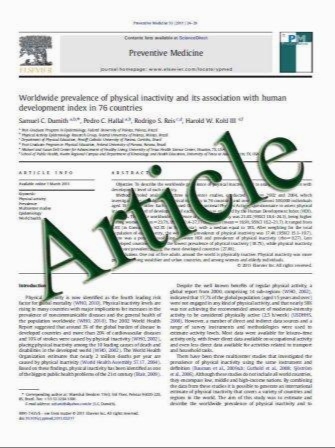Effects of high thoracic epidural anesthesia on atrial electrophysiological characteristics and sympathetic nerve sprouting in a canine model of atrial fibrillation
- نوع فایل : کتاب
- زبان : انگلیسی
- مؤلف : Shu-sen Yang Wei Han Yong Cao Guo Dong Guo Zhou Wei-min Li Run-tao Gan Hui-ying Chang Zheng Wang
- چاپ و سال / کشور: 2011
Description
High thoracic epidural anesthesia (HTEA) blocks the afferent and efferent cardiac sympathetic nerve fibers and may affect atrial electrophysiological characteristics and nerve sprouting in patients with atrial fibrillation (AF). In this study, 18 dogs were randomly divided into a control group (n = 6), in which dogs were atrially paced at 400 beats/min for 6 weeks; an HTEA group (n = 6), in which dogs underwent atrial pacing and HTEA for 6 weeks; and a sham-operated group (n = 6), in which dogs underwent the operation but did not receive atrial pacing or HTEA. Electrophysiological examinations were performed in all groups. Cardiac nerves were immunocytochemically stained with anti-growth-associated protein 43 (GAP43) and anti-tyrosine hydroxylase (TH) antibodies. The protein expressions of nerve growth factor (NGF), GAP43 and TH in atrial myocardium were also studied by western blot. In addition, the plasma levels of C-reactive protein (CRP) and norepinephrine, as well as atrial production of superoxide anion (O2 -) and malondialdehyde, were measured. In the HTEA group, atrial effective refractory period increased (P\0.05) and AF maintenance decreased (P\0.01) significantly compared with the control group. The densities of GAP43-positive nerves and TH-positive nerves were significantly lower in the HTEA group compared with the control group. The protein levels of NGF, GAP43 and TH were also lower in the HTEA group compared with the control group. A significant positive correlation between the expressions of NGF and GAP43 (P\0.01) was observed. A similar correlation was demonstrated for NGF and TH (P\0.01) in our study. Furthermore, the plasma levels of CRP and norepinephrine, as well as the amount of O2 - and malondialdehyde produced from myocardium, decreased in the HTEA group compared with the control group. In conclusion, HTEA inhibited electrical and nerve remodeling and reduced the maintenance of AF in a canine AF model, in which process HTEA exhibited anti-inflammatory and antioxidant effects, indicating that, in addition to the efferent cardiac sympathetic nerve, afferent fibers also play an important role in the initiation and/or maintenance of AF.
Basic Res Cardiol (2011) 106:495–506 Received: 16 September 2010 / Revised: 16 December 2010 / Accepted: 18 January 2011 / Published online: 13 February 2011


